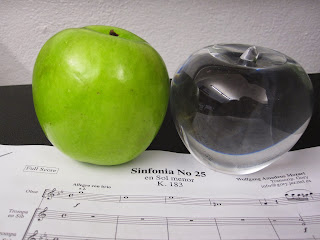So already, as many of you already know, I have moved my blog from Blogger to Substack. This way, those those who want to receive emails notifying them that I've posted can do so.
Joan Soble: So Already . . .
A Blog about Moving Forward, Paying Attention, & Staying Connected
Tuesday, July 8, 2025
"And They Lived Happily Ever After": Reflections on a Famous Final Sentence
Saturday, July 5, 2025
As Far (and Near) as the Eye Can Sze
Tuesday, June 24, 2025
Revelation, Inspiration . . . & Then . . .
Recently, I've been musing on the connections among revelation, inspiration, and action.
If you'd like to read "Revelation, Inspiration . . . & Then . . .," here's the link--https://joansowhat.substack.com/p/revelation-inspiration-and-then
Thank you for reading, if you do. And feel free to subscribe for free.
Painting by Karin Foreman: “Counting of the Omer” by Karin Foreman: https://karinforeman.com/counting-of-the-omer-sfirat-haomer-%D7%A1%D7%A4%D7%99%D7%A8%D7%AA-%D7%94%D7%A2%D7%95%D7%9E%D7%A8/counting-of-the-omer/
Wednesday, May 28, 2025
Of Horses, Peaches, Pears, and Poems
So already, as many of you already know, I have moved my blog to Substack so that those who want to receive emails letting them know I've posted can do so.
Recently, I've been musing on the kinds of language we need to have in our lives in order to live healthily and happily enough.
If you'd like to read "Of Horses, Peaches, Pears, and Poems," here's the link--https://joansowhat.substack.com/p/of-horses-peaches-pears-and-poems --and thank you.
Tuesday, May 6, 2025
Saying Hello and Good-Bye as So Already Moves On
When I started So Already [on Blogger], I didn’t realize how much I needed a space where I could explore topics and feelings that resonated in the core of me, especially when I wasn’t sure why. Conversation with others often expands and refines my thinking and provides me with insight into the intensity of my feelings. But what I often need even more, especially at first, is to be in conversation with myself. So Already provides the time and space for that. That’s why it says on Blogger, “In So Already, I always get to be me.”*
should you want to subscribe, there will be a subscribe button somewhere within each of my posts, which can be found at this address: https://joansowhat.substack.com. Please know I personally won’t ask you to pay to subscribe, but Substack will no doubt encourage you to pay or pledge.
Sunday, April 27, 2025
The Worlds Beyond Our Windows in Life and Verse
There are photographs of such places and flowers. There are newsletters describing them and encouraging people to visit them. There are radio interviews that promise such places and flowers will inspire "oohs" and "ahs." But poems say and share something different and more about the experience of them. The gift of poetry is that it brings to life such moments and the insights associated with them, even for those of us who are merely reading about them. Happy National Poetry Month, and may the worlds outside of your windows make you feel humbled, connected, profoundly alive, and blessed.
Monday, March 10, 2025
On God Avoidance and Other Activities in the Garden
It's my habit to read a little before I go to sleep, and I wanted to take in some words, but not the kinds of words I'd been taking in during the weeks before. As I climbed into bed wondering, "What words, what words?" I realized I hadn't given God much thought or attention in the last few months.
The 'Hear, O Israel' is a statement of faith, love and commitment to listen to God's voice. And to live that belief means bringing oneness and wholeness into the world. It means bringing people together, bringing unity and peace into the lives we touch. (51)**
. . . is not only the first question: it is also the eternal question. At each moment in our lives, this question is addressed to us: Where are you? Where are you spiritually? Where are you morally? What have you done with life, and what are you doing with it now? Are you proud of your conduct in the garden?"



















